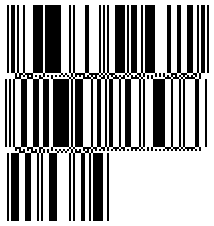
The "DataBar Expanded Stacked" barcode is a sophisticated design that allows for the encoding of a vast amount of data in a compact space. It is part of the GS1 DataBar family and is specifically structured to be split into multiple rows, with a unique separator pattern between them. This stacked configuration is particularly useful for items that require supplementary data to be encoded, such as fresh produce or other variable weight items in retail environments.
The design of the DataBar Expanded Stacked barcode enables it to encode not only the Global Trade Item Number (GTIN) but also additional application identifiers and data attributes. These attributes can include critical information such as sell-by dates, batch numbers, weights, and expiration dates, making it an invaluable tool for inventory management, supply chain logistics, and consumer information.
One of the key features of this barcode type is its omnidirectional scanning capability, which means it can be read from any angle at the point of sale, enhancing the efficiency of the checkout process. The DataBar Expanded Stacked barcode adheres to the ISO/IEC 24724 specifications and is defined in the GS1 General Specifications document, ensuring its global standardization and interoperability.
In terms of usage, the DataBar Expanded Stacked barcode is commonly found in retail settings, particularly supermarkets where space on packaging is limited, and detailed product information is required. It's also used for coupons, where it can encode extensive data to support promotional activities. The barcode's ability to pack a wealth of information into a small area makes it ideal for smaller packages, where traditional barcodes might not fit.
Overall, the DataBar Expanded Stacked barcode is a versatile and powerful tool for modern retail and supply chain operations, providing a reliable means to encode and transmit detailed product information in a space-efficient manner.
